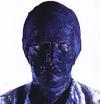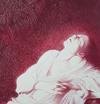Press and Media
Abo Underrätteiser, Finland – September 30, 1998
Wäinö Aaltonen Museum of Art, Turku, Finnland
THE POWER OF IMAGES AND EVIL
The child has grown into a world famous artist. But he has carried his questions with him. Today opens a large retrospective exhibition of Helnwein's art in Waino Aaltonen Museum of Art in Turku. The exhibition contains aquarels, oil paintings, drawings and photographs. They have often caused controversies by dealing with subjects that are all too sensitive.
A child grows up in Austria after the Second World War, in a country which is morally struck to the ground after the Nazi days. A child always asks what happened, but it is never given an answer.
"When I was a child, all adults seemed depressed. Nobody sang or laughed ever. Until the sixties nobody could talk about the war or the holocaust. Slowly, I realised that the generation of my parents had seen the greatest catastrophe in the history of the Western civilisation."
Gottfried Helnwein is quiet for a moment and looks around the hall where his earliest paintings are installed. Paintings of injured children with large bandages covering their eyes, hands and mouths. Self-portraits of a screaming man with eyes barred, surgical instruments filling his mouth.
"It seemed that people walked around like robots. I never got answers for my questions. So I began to paint."
Brushes and Printing Machines
The child has grown into a world famous artist. But he has carried his questions with him. Today opens a large retrospective exhibition of Helnwein's art in Waino Aaltonen Museum of Art in Turku. The exhibition contains aquarels, oil paintings, drawings and photographs. Many of the works have been made as cover images for magazines or posters for theatre productions. They have often caused controversies by dealing with subjects that are all too sensitive.
"I want to reach ordinary people, the working class", says Helnwein. "But the 'high' culture of today lives in the tiny world it has built for itself. The real art is out there in the streets, in advertisements and magazines. I have always thought that the printing machine is the best medium for an artist. I want to reach millions, not hundreds, with my art."
Uproar Gave Insights
Helnwein saw the power of images in 1979 when his painting caused an uproar in Austria. One of the country's leading doctors admitted in an interview that he has taken part in experiments in which he has killed children by injecting poison into their food. The article caused no reactions. But when Helnwein painted a picture of a child lying dead over a plate of food, and wrote a little ironic letter thanking the doctor for his deeds, the public opinion soon changed and the doctor had to leave his profession.
"This event made me wonder if people can still read. In any case, in today's media world the image is much more powerful than the word."
Painful Art
Helnwein's exhibition is at the same time very easy and very difficult to grasp. His style is photorealism. Pop art, if you will. Helnwein's technical abilities are outstanding. His motives are very clear, almost too sophisticated, but his thematic contents deal with the most sore pain spots of our century. A recurring motive is the abuse of children by adults and the evils of Nazism. Helnwein's message is both important and open to diverse interpretations, but greatly difficult to grasp.
The world has changed a lot since the sixties and many old taboos are now broken. When Helnwein dealt with sexual abuse of children in his works from the 70s, it was a subject nobody dared to speak of. People wanted not to see, not to hear. And today the world is riddled with child abuse scandals: Belgium, Germany, USA, Finland.
The Anguish Grows
But has Helnwein's anguish concerning the questions of his childhood diminished in time, has painting helped him?
"No, my anguish only grows", Helnwein answers. "The terror of Nazism was a point of concentration of evil and foolishness throughout history. But it was a fine example of a phenomenon which has refused to die, but still survives. Even among us."


